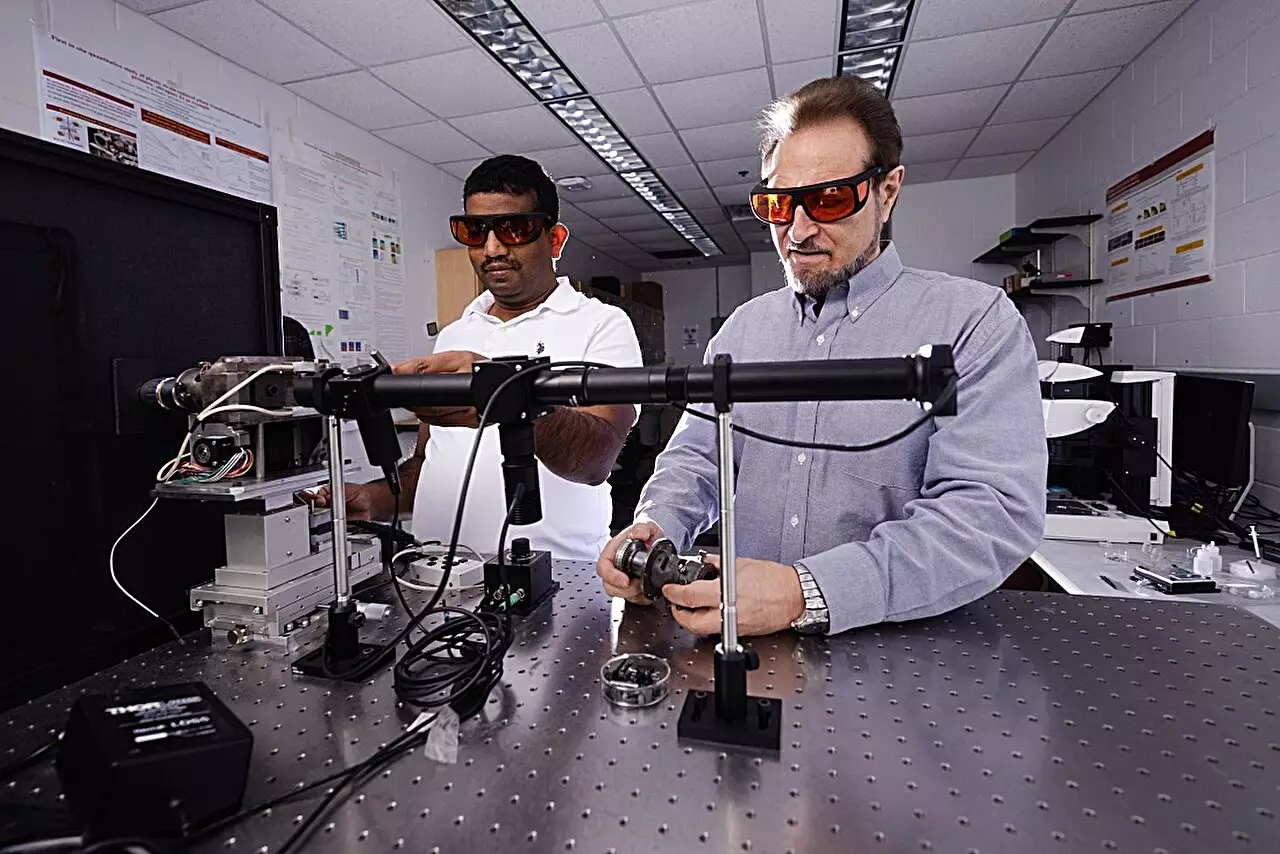In the realm of materials science, high-pressure research continues to open doors to undiscovered phenomena. One pioneering figure in this field, Valery Levitas, has taken significant strides in unraveling the complexities of material behavior. By innovatively employing a rotational diamond anvil cell, Levitas, alongside his research team at Iowa State University, has pushed the boundaries of how we perceive and manipulate silicon, a cornerstone material in the electronics industry. Their recent findings underscore the dynamic interplay between pressure, shear deformation, and phase transitions, resulting in discoveries with potential applications across various fields.
The rotational diamond anvil cell (RDAC) serves as a critical apparatus for investigating materials under extreme conditions. Since Levitas brought an early version of the RDAC to the United States in 1999, the instrument has evolved significantly. This high-precision tool allows researchers to compress and twist materials between two diamonds, enabling real-time observations of how these materials behave under stress. Understanding how crystal structures transform when subjected to unique strains provides insights that could lead to the development of advanced materials with tailored properties.
Discovering Silicon’s Unique Phase Transformations
In their latest publication, Levitas and his collaborators delve into the phase transformations of silicon when subjected to both pressure and plastic shear—mechanical strains that induce permanent deformation. Traditionally, studies have primarily focused on silicon’s reaction to high pressures alone, failing to explore the synergistic effects of shear deformation. The researchers experimented with silicon particles of varying sizes, demonstrating that phase transformations can occur at significantly lower pressures than previously thought. Remarkably, they found that pressures as low as 0.3 gigapascals can instigate a transition from silicon’s “Si-I” crystal phase to the more stable “Si-II,” a transformation that ordinarily does not start until pressures reach upwards of 16.2 gigapascals.
The implications of these findings extend far beyond theoretical exploration. By reducing the required pressure for phase transformations, Levitas and his team have paved the way for practical applications of silicon in various industries. The ability to obtain desirable properties in silicon at lower pressures means that industries could potentially produce advanced materials without the prohibitive costs and technical challenges associated with traditional high-pressure processes. The researchers highlight the promise of nanostructured phases and nanocomposites, which could deliver optimal electronic, optical, and mechanical properties, thus revolutionizing the production of electronic devices.
Overall, the research suggests that the effects of plastic deformation may hold the key to unlocking new material phases that have hitherto been ignored by conventional studies. Levitas emphasizes that this technique challenges existing paradigms by focusing not merely on the alteration of samples’ shapes but primarily on the transformation of their microstructures. This shift in perspective could lead to groundbreaking discoveries and applications in materials science.
Looking forward, Levitas and his team are set on exploring these new territory areas further. The goal is not only to confirm the experimental findings but also to strategize on practical applications for these novel material phases across various industries. As silicon continues to be indispensable in technology, understanding its behavior under different conditions remains paramount.
The innovative work by Levitas and his team marks a significant step in understanding the behaviors of materials under high pressure and shear. This research not only provides valuable insights into the fascinating world of material science but also offers practical solutions for the industry. By challenging the traditional notions surrounding pressure and phase transitions, these researchers are set to redefine our approach to materials engineering, establishing a brighter future for electronic applications and beyond. As further studies unfold, the intrigue surrounding silicon and its myriad of phases continues to deepen, inviting researchers to explore uncharted paths in the quest for advanced materials.

